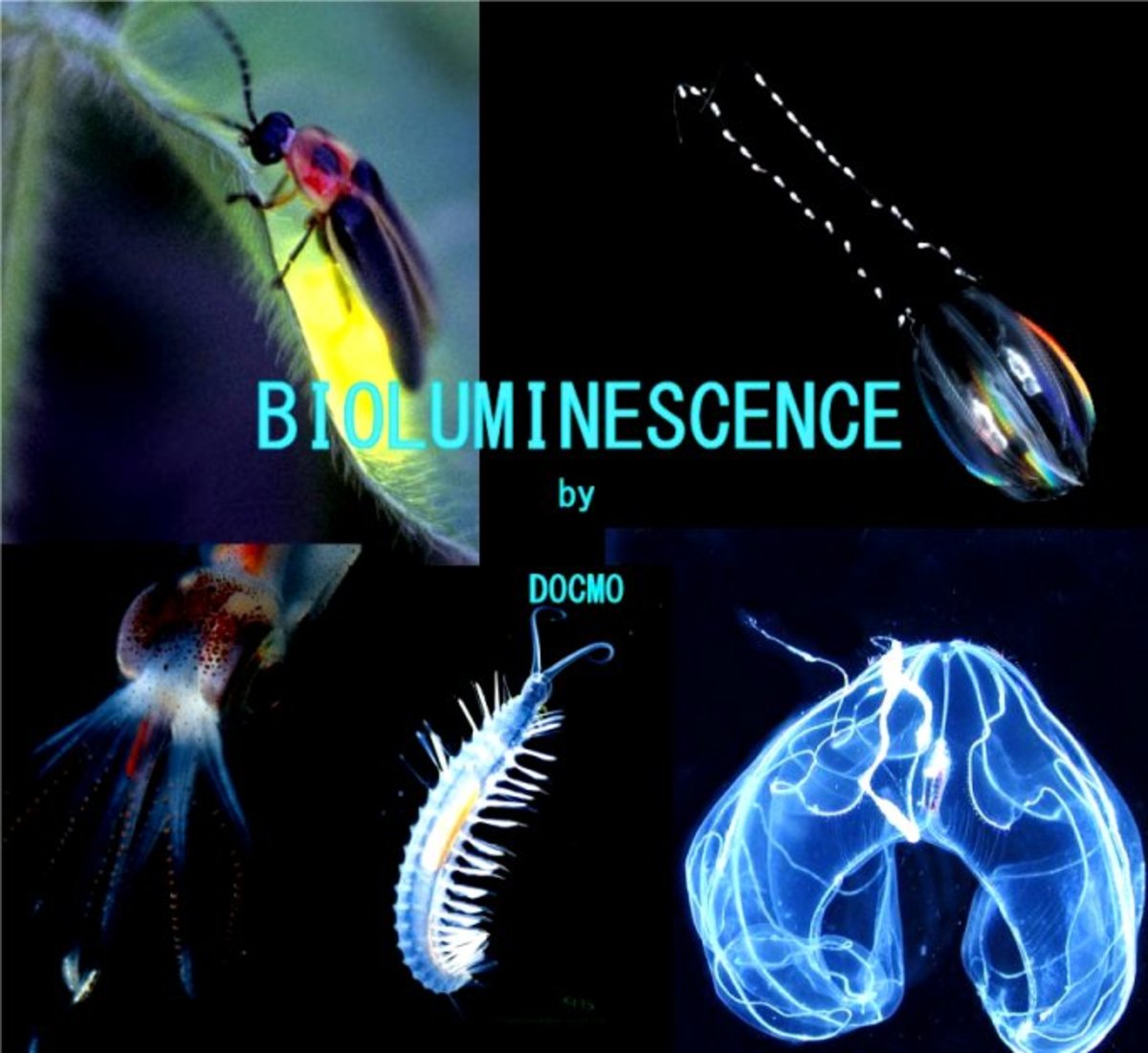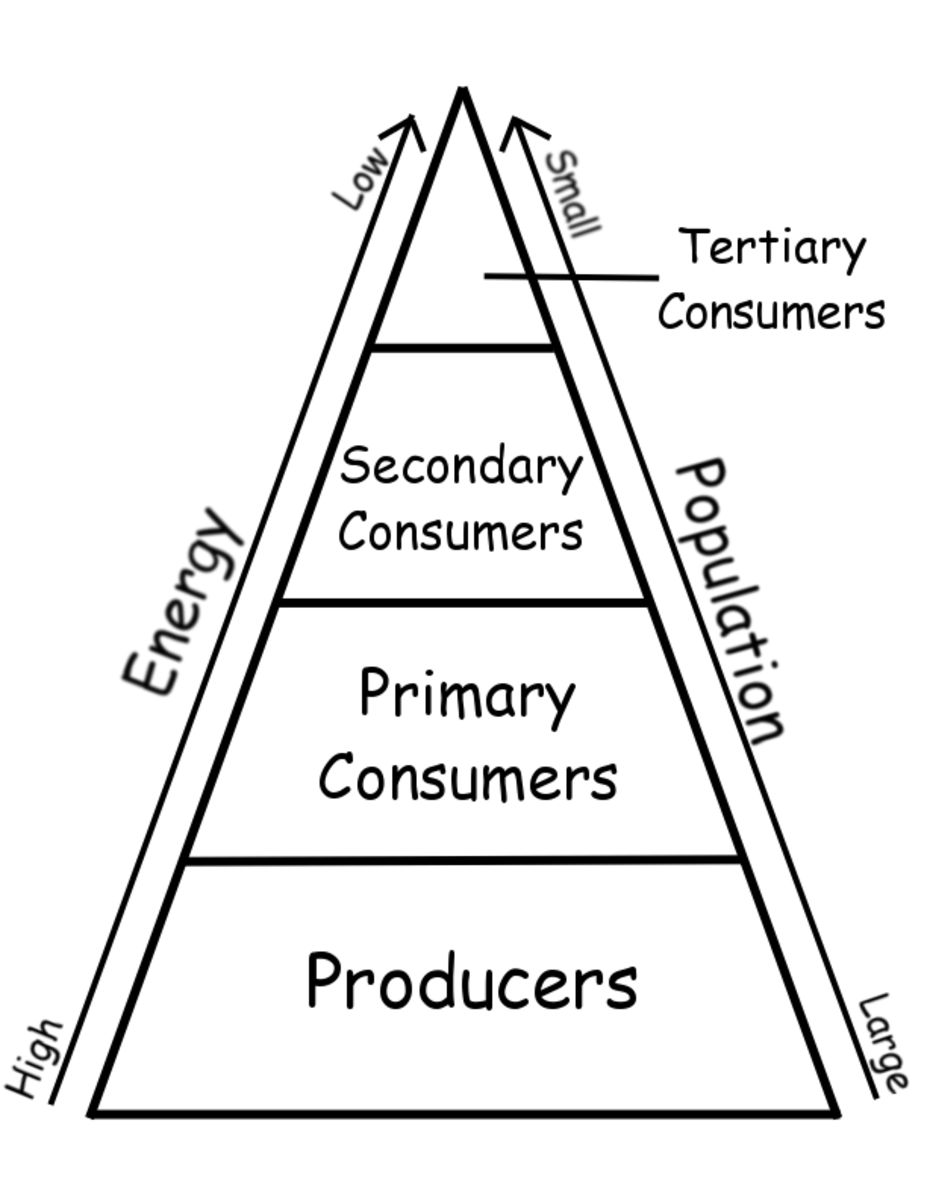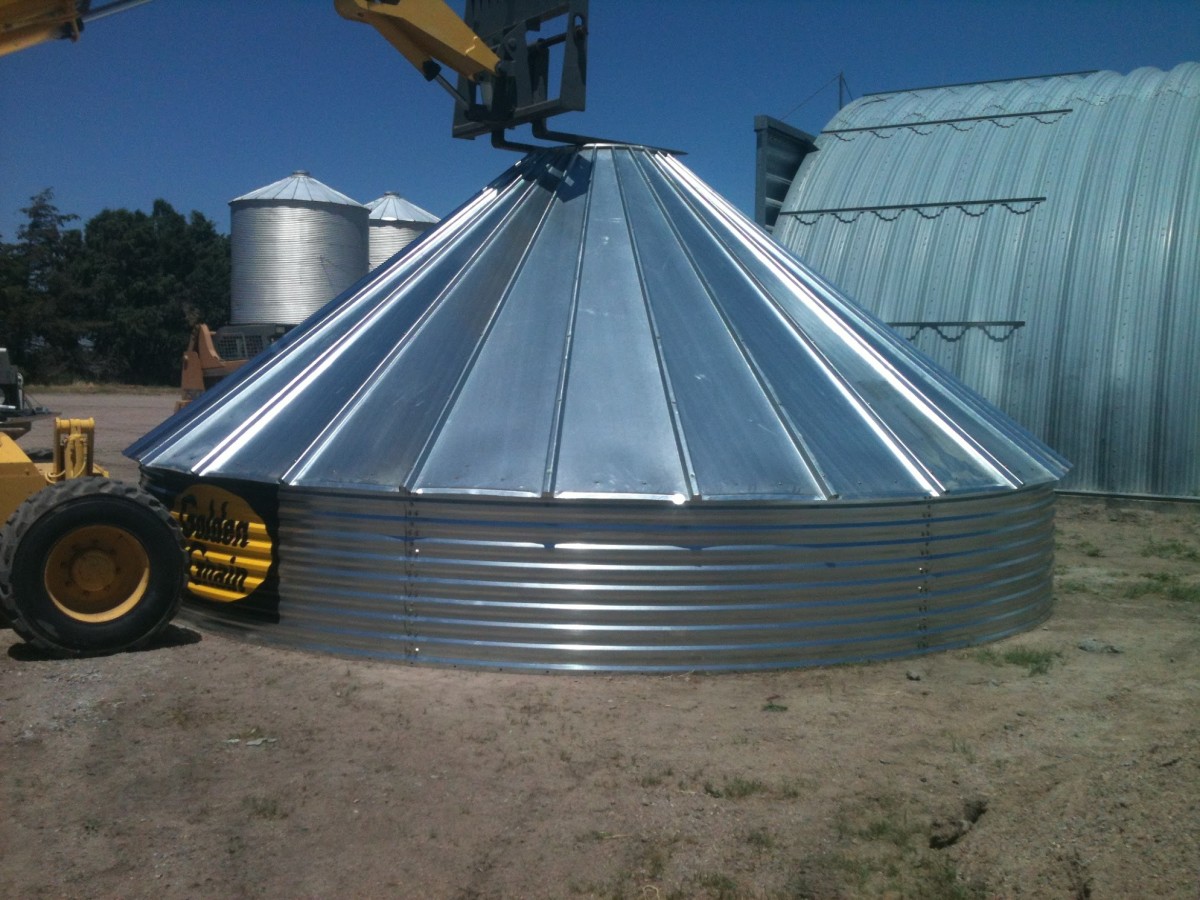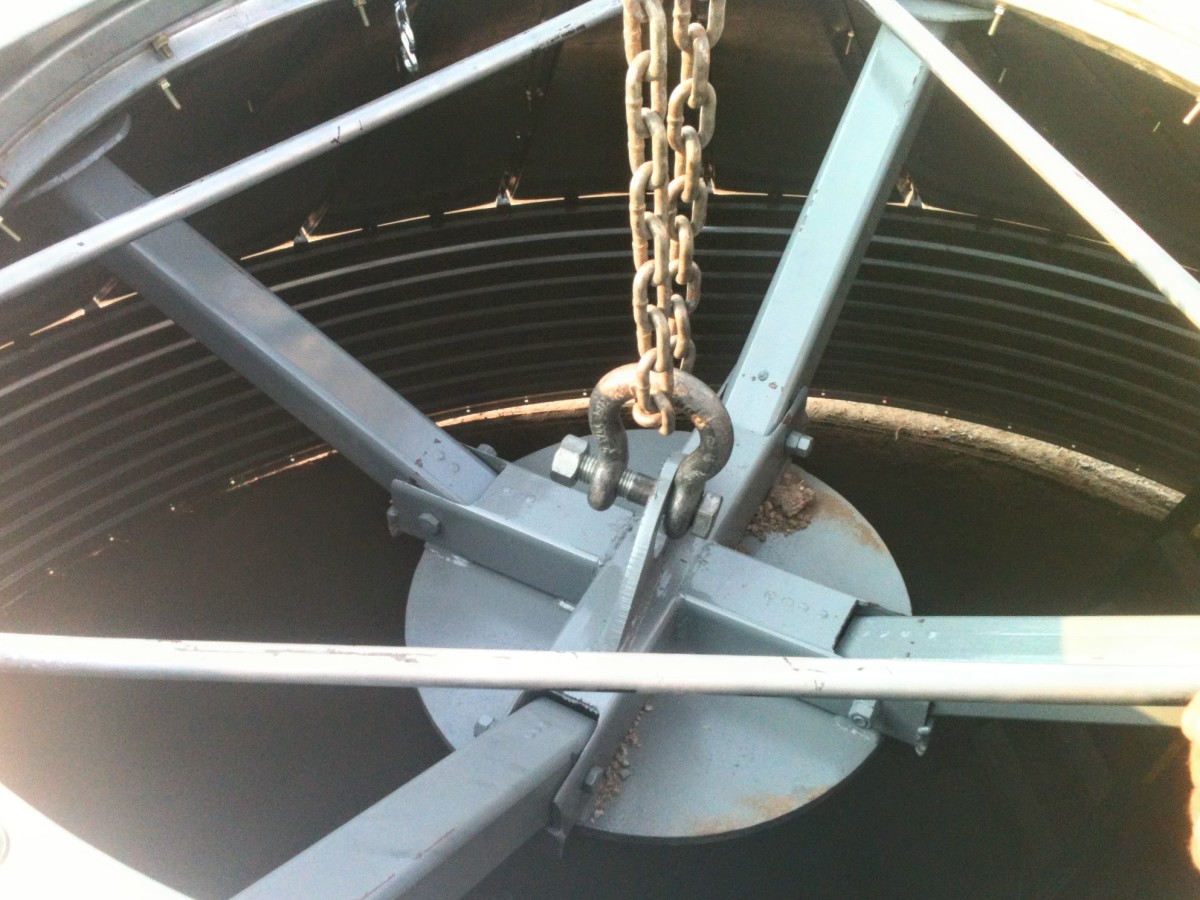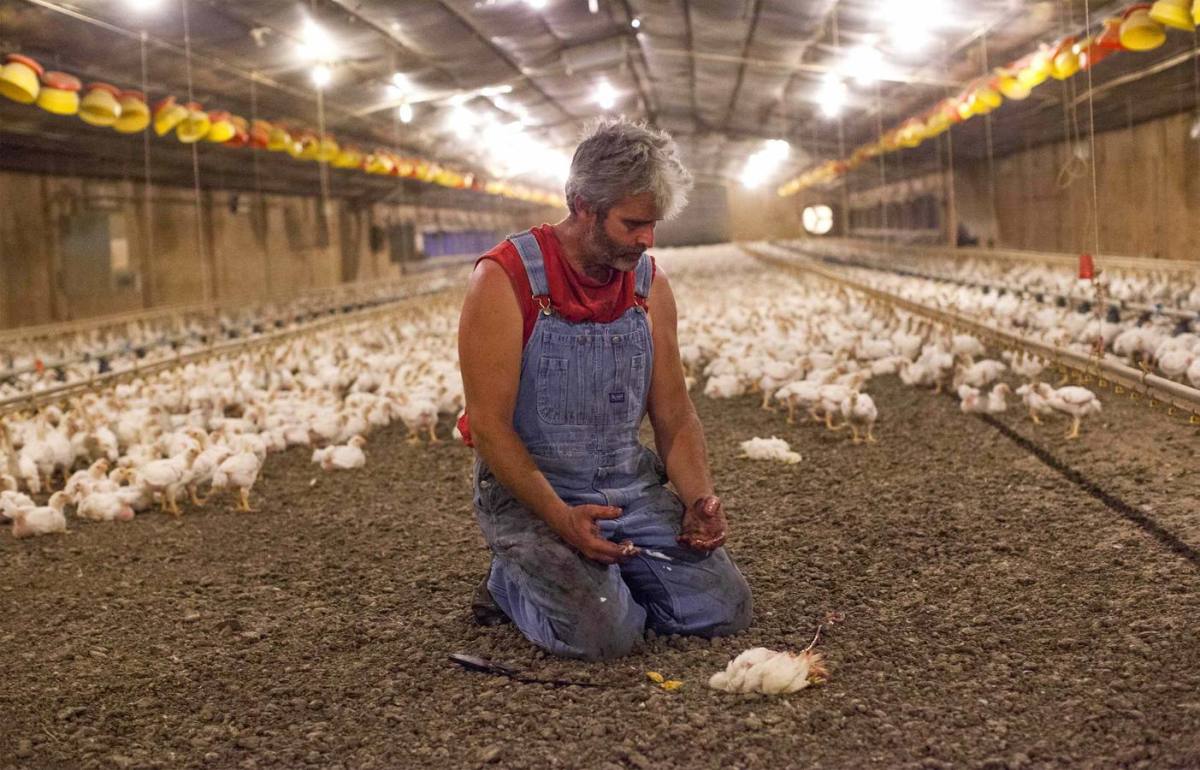Conceptualizing an Integrated Farm/Ranch Environment
My Garden
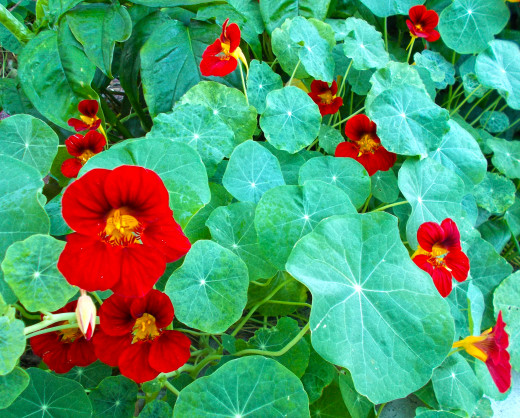
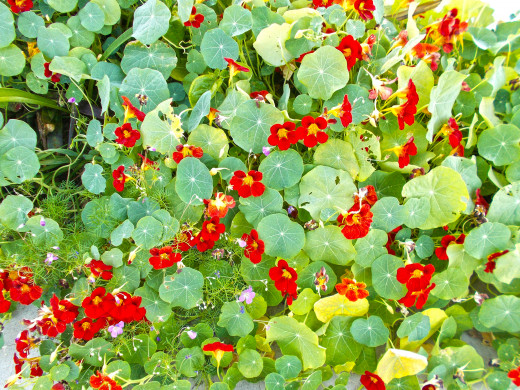
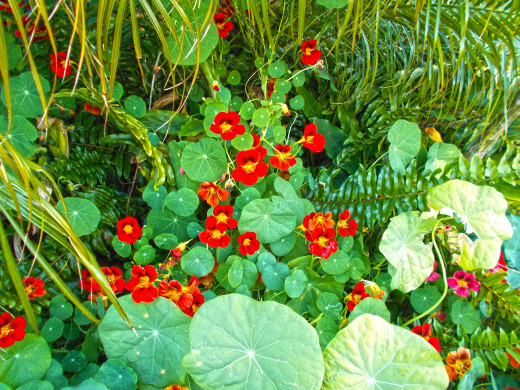
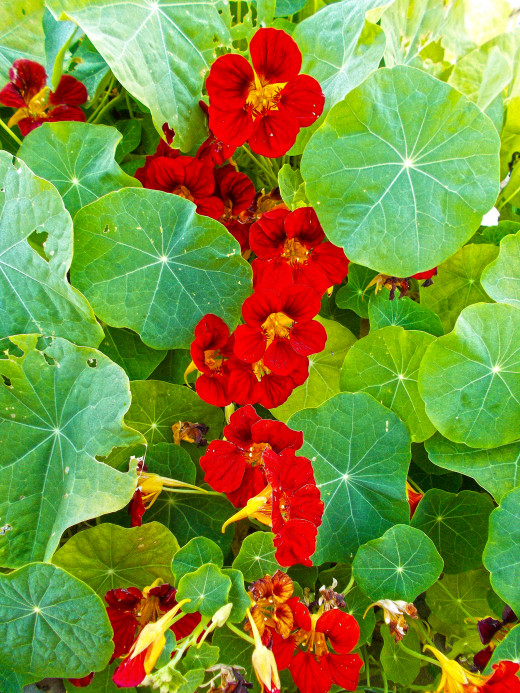
Practice What You Preach
First allow me to comment that this images are of my yard, and I recycle as much as I can into the yard to get these results. I feed my food wastes to earthworms and the compost pile, teaming with life. So, yes, I practice what I preach and it works well.
(Kant's categorical imperative, what can I say?)
Disintegrated Nature
The mankind has successfully disintegrated nature into manageable components for man’s benefit (there are more cows now than Buffalo (American Bison) some four hundred years ago.
However, expanding populations and increasing concerns about resource scarcity, land availability, biodiversity conservation generating interest in sustainable agriculture technologies which can, in effect, and as I will argue, reintegrate more of the natural processes, increase the density of food, recycle most materials human use, and do so to the benefit of the entire ecosystem.
Ecotechnological Innovation
We already have the skills and knowledge to accomplish this, the skills needed to implement ecotechnological innovations that have the potential to expand yields, reduce waste and reduce ecological impact by increasing the efficiency of resources used, increase energy efficiencies, and address concerns about sustainability, and the environment and enhance profitability by simply reintegrating organic systems into a more natural state.
The USDA is slowly adopting sustainable farming practices as the EPA pushed toward more sustainable agriculture and a reduction in the volume of waste being dumped by our cities into landfills, a return to organic methods, long considered alternative farming and ranching which are more effective, and reduce the need for chemical fertilizers, pesticides, antibiotics, and other toxic chemicals which do far more damage than has been realized in the past, including damage to soil organisms.
Nature Recycles Everything
Proven many times is the fact that nature recycles all natural organic elements and few chemicals are needed on ranches and farms when organic practices are followed.
Gone are the poor land management practices that led to the dust bowl, and rapidly retreating are practices that demand ever more water to leach chemicals and mineral salts from the soils in order to simply grow a crop. We simply cannot afford to ignore the evidence, the balance of nature is winning the argument and this is a century overdue.
I expect this will take twenty to thirty years to affect most farmers, enabling better ground management practices which will directly improve the soils, the ground ecology, and the people who consume those foods thusly produced, however, they are in no manner preparing to integrate urban waste management practices with the ranch or farm, nor are they considering integrating the ranch with the farm.
We very much need to re-integrate recycling, cattle, and the ranch to the benefit of all, and to the soils ecology. If you don’t take care of the soil, you can’t live on it.
This is an extreme advancement in thinking for most people and will become an important site for education and studies of integrated farming.
The Feedlot Ecosystem
Current practices are to collect the cattle into pens (feedlot), and feed them until they reach the desired weight. A cow will gain one pound for every six pounds of feed during its last months of life in these feedlots, and this feed includes silage (fermented mixed plant products), hay, stray, and grains.
Please understand, this is not a moral issue, the cattle could be treated better, but this is not an issue of right and wrong. This is a resource management issue.
For an ecosystem to fail means that the system has been overrun, overpowered, if you will, by some aspect or character of what was done in or on or to it.
Feedlots are like this.
Below them is a plume of organic nutrients so rich they reach toxic levels that go unused by the organisms that could have used them to enhance the ecosystem. When it rains, this same toxic mess runs off and usually needs to be confined. But why?
Let’s be fair. This is only toxic because of its concentration. Collect it, bottle it, dilute it about 20:1 and fertilize almost any plant you have.
What is Wrong with a Feedlot?
When you pack cattle into an area such as this their immune system weakens, the animals become sick, and so, antibiotics and other medications are used to keep the animals alive. But this kills the soil organisms. No organisms, no nutrient recycling.
Steer manure is so rich in organic nutrients that it is often aged or composted to off-gas, or reduce the nitrogen content before it is distributed. But now you have lost more of a vital plant nutrient, nitrogen.
These are the same nitrates needed by the trees and grasses in the local farms.
The cow only partly digests the carbon rich grasses they are fed, and thus produce large volumes of manure, rich in carbon and nitrogen, two important metrics of fertilizer, thus really is great fertilizer.
This carbon and nitrogen are currently the primary means of measuring the fertility of the land other crops are grown on.
Philosophically, we take what we want out of nature then try to increase its production.
Thought Experiment
Let’s do a thought experiment. Imaging elk in a forest pasture (ah, heck, just Google it). Tell me what you see. The elk, the trees, the grassy pasture.
This is how you imagined beef being raised, and, for part of their life this is in fact the way it is done. So now we have two images, the elk and the young beef. Where is the manure and cattle urine?
In the soil, and organisms feed off of this recycling it into the soils where still other organisms eat it and are eaten themselves by predatory organisms, and so on and so forth. Go into the field and find a spot where the droppings have been digested and you may find more than a million species of organisms.
Nor realize, in all of history, science has only classified about 1,500,000 different species of organisms, plants, animals, bacteria, etc. A tablespoon of this soil will contain more organisms than this. There are likely over a million different soil bacteria, a million different nematodes, half a million fungi, a quarter million Actinomyces, then thousands of insects, and so forth. All of these are dependent on organics sent from above, even if “above” is only the unicellular algae or blue green algae (bacteria) that live in the very surface layer of the soil, everything is dependent on photosynthesis. Oh, but wait. Photosynthesis is dependent on carbon in the air and ground, and water, and light, and other nutrients.
This is in every measure a chicken-and-egg conundrum: Which came first?
But I digress…
Do you recycle nutrients?
Do you bury food wastes or do other nutrient recycling in your yard?
Where’s the Beef?
They have separated out various components of nature into discrete units in a successful attempt to maximize the production of one food. But this system is failing at a rapid rate specifically because it is disintegrated, only a part of the whole picture.
I qualify this statement because the leniency and resilience of nature for the current farming practices is expiring. You can neither continually add nutrients without using them, just as you cannot keep taking carbon and nitrogen from a system without returning something to it. It simply is not possible.
If these do not change, our nation and subsequently the world will have serious issues to face in the future.
Nature integrates things very well, and, produces plenty of food.
Isolated Nutrients
Isolating these factors as well as synthesizing a few of the nutrients needed by the organic system has resulted in toxic soils with little life in them and a huge waste of resources.
This is not a plea to return to primitive means, rather a plea to fully integrate what we already know about the natural systems to increase food production.
I will argue that the world is not in need of reducing populations, rather, in need of managing the resources we are now wasting to support the current and future populations.
The question is; how long will it take before we integrate the raising of our foods with our own biology?
You see we create nutrient rich waste as well, treat it as if it were only toxic waste and dispose of it. But that is a separate article.
Animals in the Orchards
Ruminant animals are very good at moving around their fertilizers and distributing them around the field they are in. Why isn’t the animal manure going back into the ground in the feedlot? We covered this already, the medicines needed to keep them alive kill the organisms that digest the waste.
Without these medicines, the Dung Beetles would digest the waste and return it to the soils for the other ground organisms to use all of which produce usable nutrients by breaking down the components of their food and recycling them.
We are seeing the USDA attempting to return healthier soils by adding organic fertilizers and cover crops to the orchards to increase the fecundity of the ground. This is more important than you may realize, but, we are not seeing the reintegration of the animals with the crops.
Integration
The overriding question, perhaps facing the country and world is, how do we reintegrate the farm, ranch, and waste disposal needs of humans to increase the efficiency of all of these systems? Is it feasible, functional, and healthy to do so?
An outstanding yes, it is!
© 2015 Ronald A Newcomb

